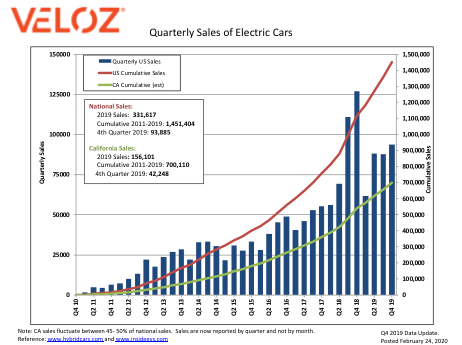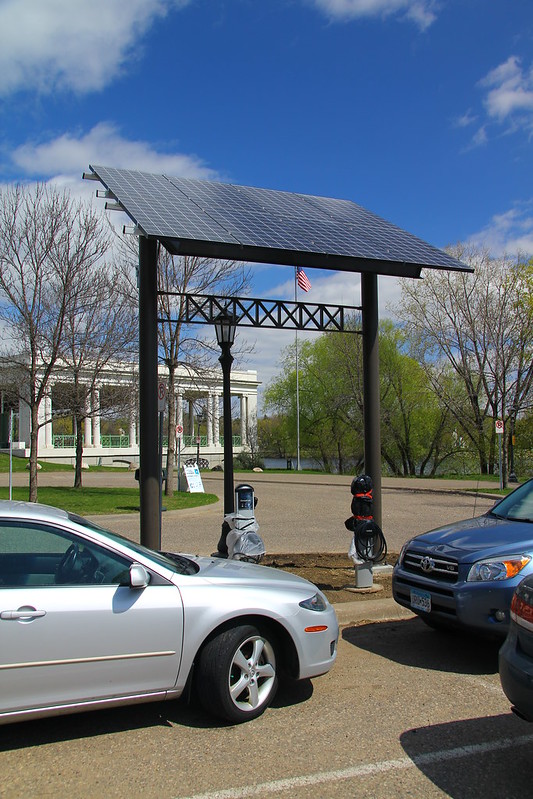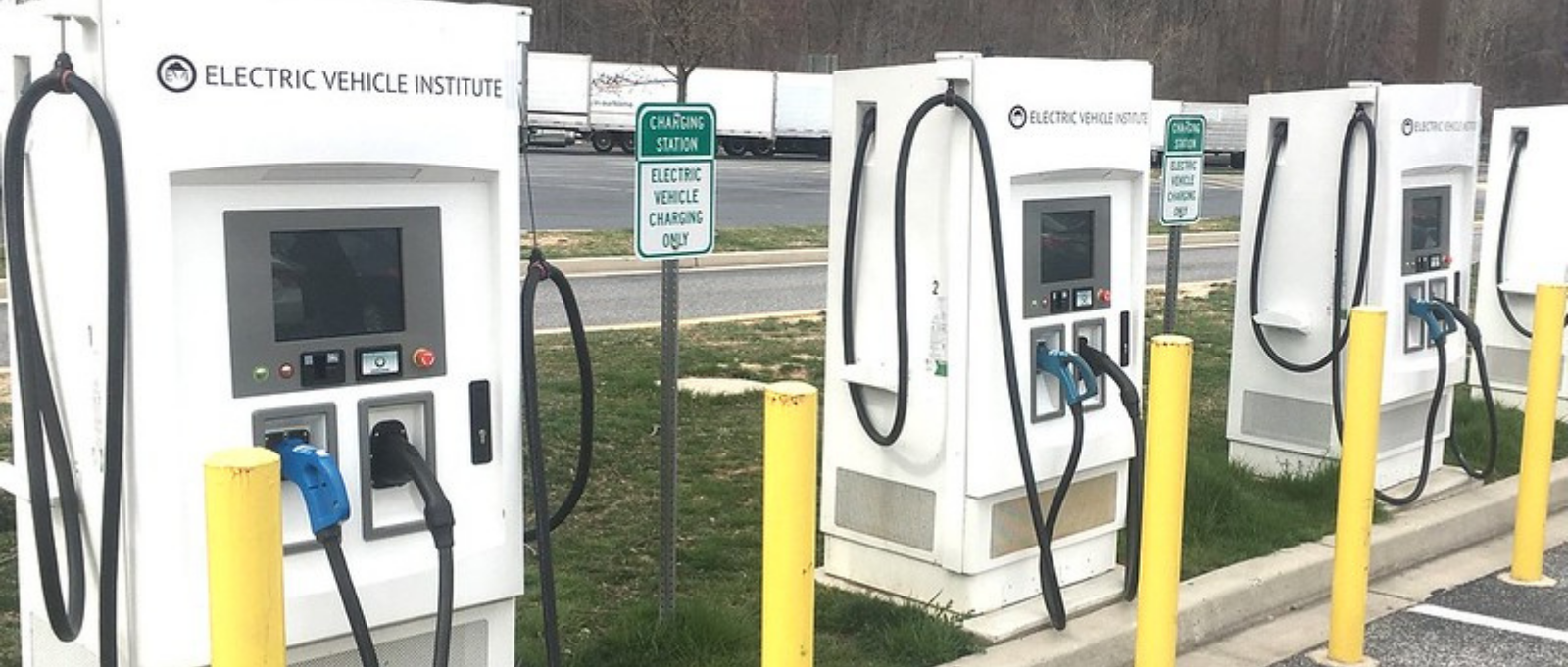September 30, 2020
Topic
As all of California suffers from climate-exacerbated wildfires, Governor Gavin Newsom took an ambitious step in the state’s efforts to address climate change with an executive order that phases out the sales of new gas-powered passenger cars by 2035.
“This is the most impactful step our state can take to fight climate change,” Newsom said. “For too many decades, we have allowed cars to pollute the air that our children and families breathe. You deserve to have a car that doesn’t give your kids asthma. Our cars shouldn’t make wildfires worse – and create more days filled with smoky air. Cars shouldn’t melt glaciers or raise sea levels threatening our cherished beaches and coastlines.”
This ambitious action also sets California on a path to dominate in the green energy economy – green-tech jobs represent a five-fold increase over the total number of jobs in the fossil fuel industry, according to the Governor’s Office.
In addition to mandating new cars to be zero-emission by 2035, the California Air Resources Board will direct all operation of medium and heavy-duty vehicles to be zero-emission by 2045, where feasible. The mandate also requires state agencies to partner with the private sector to deploy affordable fueling and charging options for zero-emission cars.
Newsom’s order builds on the work of former Governor Jerry Brown – who in 2012 directed state agencies to work toward a goal of putting 1.5 million zero-emission vehicles on California roadways by 2025 and reaffirmed California’s commitment to zero-emission vehicles (ZEVs) with Executive Order B-48-18 (signed January 26, 2018), which set a goal of 5 million ZEVs on our roads by 2030.
By the numbers: The horizon for electric vehicles
Since 2011 (over an eight-year time period), Californians have bought 726,000 electric cars, with 156,000 sold in 2019 sales of zero-emission vehicles (less than 10% of new car sales). To reach the 1.5-million target, we would need to more than double that amount over the next five years and we would seven-fold growth over the next 10 years to meet the 2030 goal.

Reference: www.hybridcars.com and https://insideevs.com/
Q4 2019 Data Updated, posted February 24, 2020
If Governor Newsom’s order successfully drives market certainty and investment, it could help California more rapidly ramp up electric-vehicle production and sales, help dramatically increase air quality, and reduce greenhouse gas emissions (by 35%, according to the Governor’s Office). That said, 15 years is a very short timeframe to achieve the 2035 goal. State and local governments will need to ramp up efforts – ranging from updating policies to increasing charging infrastructure – to plan for electric vehicles.
Ready, set, go: What your community can do now
The California Plug-In Electric Vehicle Collaborative’s “Toolkit for Community Plug-In Electric Vehicle Readiness” offers a number of practical strategies to increase community readiness:
- Update zoning and parking policies to address signage (surface-street directional signs and parking facility signs), charging-infrastructure installation that incorporates accessibility guidelines, and parking-facility policies.
- Update local building codes to include specifications for PEV-charging infrastructure types, electric-service requirements and installation recommendations for various building types.
- Streamline permitting and inspection processes to make installing a charger easy through online applications, same-day “over-the-counter” approvals and minimal fees for charging equipment.
- Participate in Training and Education Programs for Local Officials to increase familiarity with PEV-charging infrastructure for inspection and maintenance purposes and better understand the safety implications of vehicles and chargers.
- Conduct outreach and education to local businesses and residents on the permit process, local contractors, incentives and locations of charging stations.
- Consider ways to provide charging opportunities for people who live in multi‐family dwelling units, including reaching out to local homeowners’ associations to work through their concerns and building challenges and exploring opportunities such as identifying nearby public or workplace charging that tenants can access during non-business hours.
- Encourage local employers to install workplace charging by informing local employers and property owners of the benefits of providing a workplace charging (to employees), and how to implement it.
- Include electric vehicles in local fleets by setting a target for the number of PEVs, establishing purchase and evaluation criteria, and co-locating fleet-charging stations with public assess stations for shared use. The City of San Diego has implemented an aggressive replacement plan to replace its aging fleet to achieve their Climate Action Plan goal of 50% zero-emission vehicles in the fleet by 2020. Los Angeles has a goal of 80% electric by 2025 – they already have the largest municipal electric-battery fleet in the country (with EVs making up half of their fleet). The EVs will save taxpayers about 40% in operating costs, according to City officials.
The Governor’s Office of Planning and Research’s “Zero-Emission Vehicles in California: Community Readiness Guidebook” provides detailed guidance on ZEV readiness, including necessary infrastructure, planning and zoning, permitting guidelines, the greening of local fleets, and consumer incentives and outreach. The guide also addresses concerns specific to rural communities, including limited communications infrastructure (cellular or broadband coverage); limited sites with sufficient electrical distribution infrastructure to support a Level 2 charging station; and smaller municipal utilities, which may not offer the same range of PEV-related rates, policies and incentives offered by larger utilities.
In addition to these critical local actions the state will have to address grid readiness. Energy consultants and academics say converting all passenger cars and trucks to run on electricity in California could raise power demand by as much as 25%, a potential challenge considering the percentage of the state that has experienced power shutoffs.
California will need to increase power generation and energy efficiency efforts, scale up its network of fast charging stations, enhance its electric grid to take on the added load, and invest in improvements in battery technology.

Time of use strategies will also be critical – rules and rates can encourage people to charge their cars at certain times of the day. The state consistently has excess energy during the middle of the day – if consumers were incentivized to charge then, or overnight, it would reduce the costs of reaching the goal.
Inversely, in the afternoon, when electricity demand is high but the sun is setting and solar power drops off, batteries in passenger cars, buses and other vehicles could release power back into the electric grid to help stabilize it.
“We end up with rolling batteries that can discharge power when needed,” said Matt Petersen, chairman of the Transportation Electrification Partnership. “The more electric vehicles we add to the grid, the more renewable energy we can add to the grid.”
The road ahead
California’s electric vehicle goals are extremely ambitious but essential to curb the largest source of greenhouse gas emissions (transportation) and combat the dramatic wildfires, drought, extreme heat events and air-quality impacts we are facing. Taking these steps to accelerate the adoption of electric vehicles will not only improve health and air quality and result in significant greenhouse gas emission reductions, it will also attract more green-energy investments and increase sustainable jobs.
Local governments must act now to reap these benefits by laying the groundwork for the significant changes that will be needed in our transportation and energy policies, and the infrastructure investments that will make this vision a reality





